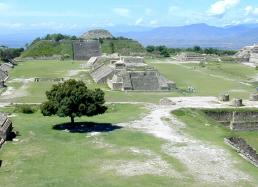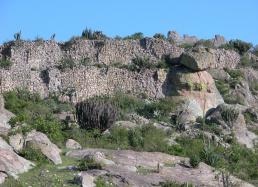About the Expedition
From their grand hilltop capital of Monte Albán—one of the earliest cities in the Americas—the Zapotec ruled over a vast network of smaller settlements that at its apex spread across 800 square miles (2,000 sq. km.) throughout the Valley of Oaxaca. Monumental palaces, huge plazas, and ritual ballcourts crowned these terraced towns, where the elite members of society claimed the grandest views and commoners dwelled on the slopes below.
At its height from A.D. 200 to 850, Monte Albán served as the center of Zapotec society, which included more than 100,000 people. But by A.D. 750, cracks began to show in the Zapotec state's foundation. Smaller cities gradually gained degrees of independence, supplanting Monte Albán’s regional prominence. Shortly thereafter, some of these newly emergent centers declined as well, and ultimately some were abandoned entirely. Most of the population slowly relocated to new centers that jockeyed for power without ever consolidating long-term control of the entire area. By the time the Spanish arrived, the region had become a distant province under Aztec control.
Ongoing Excavations
From 1999 to 2008, Dr. Feinman and Linda Nicholas concentrated their excavations on the ancient Zapotec site of El Palmillo, a political and economic center that followed the typical pattern of gaining autonomy from Monte Albán by around A.D. 750, only to be almost entirely abandoned about a hundred and fifty years later. Then in 2009, Dr. Feinman and his team launched an investigation at the Mitla Fortress, a smaller settlement that persisted longer as a town, until at least A.D. 1200.
By comparing the two sites of El Palmillo and the Mitla Fortress, Dr. Feinman aims to better understand the environmental, economic, and political factors that led to the breakdown of the Zapotec state and set the stage for the sequence of changes that followed—including conquests by the Aztec, and later the Spanish. Did drought constrict resources and undermine the economy, or did political reorganization spur population shifts and changes in long-distance trade? These are just some of the questions the team hopes to answer through their ongoing investigations.
2013 Excavation Goals
The team plans to study a cross-section of houses and buildings from the base of the terraced site to its hilltop in order to learn if the lifestyles and settlement patterns at the Mitla Fortress mirror those at other Oaxaca sites. For example, in 2011, the team excavated Terrace 276, discovering that the residents here were more involved with the preparation of maguey fiber or ixtle. In comparison, the residents of the upslope Terraces 56-57 (excavated in 2009-10) had greater access to certain exotic and rare goods and seem to have spent more time weaving and spinning. Differences in the offerings and burials found within the walls and beneath the floors of houses also reflect this social stratification, common at El Palmillo and other terraced Zapotec sites, too.
This year, the team intends to excavate Terrace 267, located adjacent to Terrace 276. To date, the team has often found that adjacent houses shared similar economic activities—making pottery, or fiber, or obsidian tools—almost like neighborhood specializations. Learning how these two terraces were connected (via stairs or paths), determining what kinds of changes occurred on them over time, and discovering whether residents were involved in comparable economic activities are just a few of the mysteries the team hopes to solve.
How local goods were exchanged from town to town is another important question. At El Palmillo, the team discovered several ancient pathways leading from the base of the site to a large open plaza area, which may have acted as a marketplace where households and travelers exchanged their wares. Future expeditions will aim to uncover whether the Mitla Fortress also had a similar feature.
To learn more about the Zapotec people and excavations at the Mitla Fortress, explore the stories in "About the Expedition," and be sure to check out Dr. Feinman's photo galleries, videos, and weekly blogs from the field during his expedition season each April through June.




